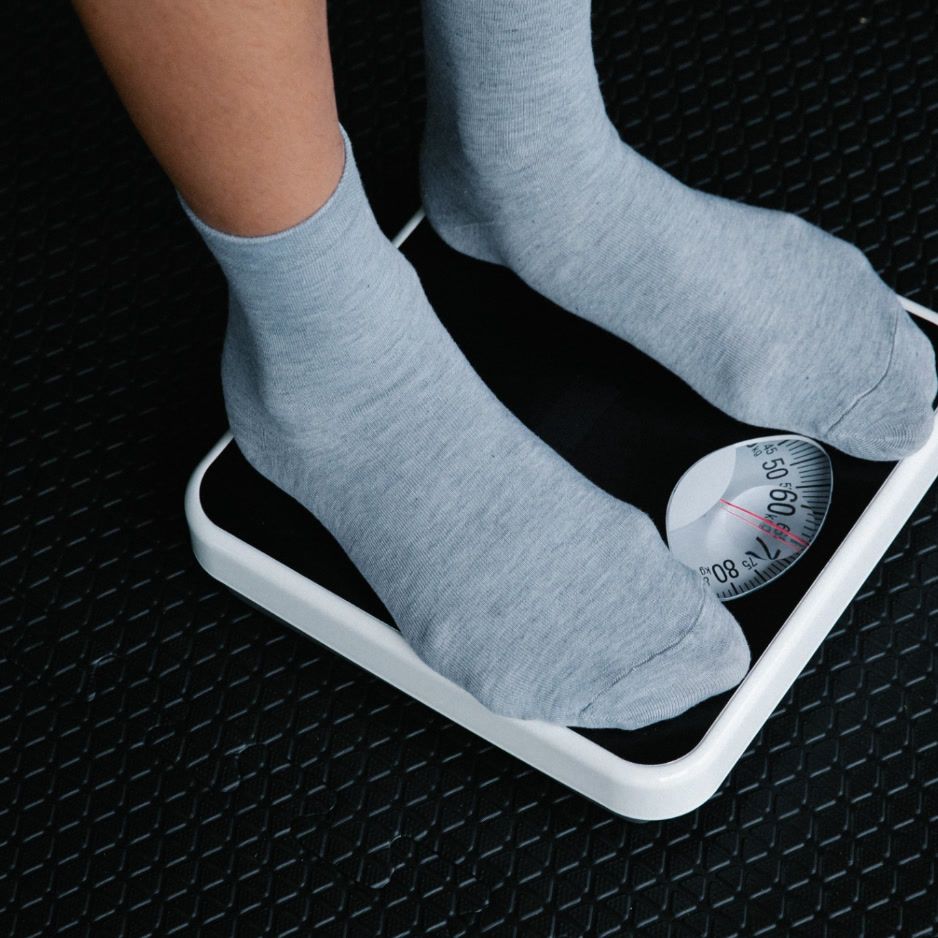Exploring the Effects of GLP-1s on Lean Mass Loss

Exploring the Effects of GLP-1s on Lean Mass Loss
Are you looking to shed some unwanted pounds while maintaining your lean muscle mass? Look no further than GLP-1s! In this article, we will delve into the world of GLP-1s and explore their effects on lean mass loss. Whether you're a fitness enthusiast or simply curious about the latest advancements in weight management, this article is for you. So, let's jump right in and discover the fascinating world of GLP-1s!
Get weekly updates.
Understanding GLP-1s: An Overview
Before we dive into the effects of GLP-1s on lean mass loss, let's first understand what GLP-1s are. GLP-1s, or glucagon-like peptide-1 receptor agonists, are a class of medications commonly used in the treatment of type 2 diabetes. They work by mimicking the effects of a hormone called GLP-1, which is responsible for regulating blood sugar levels.
GLP-1s, such as exenatide and liraglutide, are administered via injections and are known for their ability to lower blood sugar levels, promote weight loss, and improve insulin sensitivity. However, recent research has shed light on the potential of GLP-1s in preserving lean muscle mass, making them an exciting prospect for individuals aiming to lose weight without sacrificing their hard-earned muscles.
What are GLP-1s?
GLP-1s are medications that mimic the effects of GLP-1, a hormone naturally produced by the body. GLP-1 plays a crucial role in regulating blood sugar levels by stimulating insulin secretion and inhibiting glucagon release. By activating GLP-1 receptors, GLP-1s enhance the body's insulin response, resulting in improved blood sugar control.
But the benefits of GLP-1s don't end there. These medications have also been found to have positive effects on weight management. When GLP-1s are administered, they slow down gastric emptying, which means that food stays in the stomach for a longer period of time. This leads to a feeling of fullness and reduces the amount of food intake. By curbing hunger and reducing food cravings, GLP-1s can support weight loss efforts.
The Role of GLP-1s in the Body
Aside from their glucose-lowering effects, GLP-1s have several other benefits in the body. They slow down gastric emptying, making you feel fuller for longer and reducing food intake. Furthermore, GLP-1s promote the release of satiety hormones, such as leptin, and decrease the secretion of hunger hormones like ghrelin. These combined effects can help curb cravings and promote weight loss.
But how do GLP-1s impact lean muscle mass? Recent studies have shown that GLP-1s may have a positive effect on muscle preservation during weight loss. Losing weight often results in a loss of both fat and muscle mass. However, GLP-1s may help to minimize the loss of lean muscle tissue, allowing individuals to maintain a higher proportion of muscle while shedding excess fat.
One possible explanation for this effect is that GLP-1s stimulate protein synthesis in the body. Protein synthesis is the process by which the body builds new proteins, including muscle tissue. By enhancing protein synthesis, GLP-1s may help to counteract the muscle loss that typically occurs during weight loss.
Additionally, GLP-1s have been found to increase energy expenditure, or the number of calories burned by the body. This can further support weight loss efforts by increasing the overall calorie deficit. By preserving lean muscle mass and promoting weight loss, GLP-1s offer a potential solution for individuals looking to achieve a healthier body composition.
In conclusion, GLP-1s are a class of medications that mimic the effects of a hormone called GLP-1. They are commonly used in the treatment of type 2 diabetes and have been found to have numerous benefits, including glucose control, weight loss promotion, and improved insulin sensitivity. Recent research suggests that GLP-1s may also play a role in preserving lean muscle mass during weight loss, making them an exciting prospect for individuals aiming to achieve both weight loss and muscle preservation.
The Connection Between GLP-1s and Lean Mass
Now that we have a fundamental understanding of GLP-1s, let's discuss their connection with lean muscle mass. Traditionally, weight loss regimens often result in not only fat loss but also muscle mass loss. This can be problematic, as lean mass plays a vital role in maintaining metabolic rate and overall physical well-being.
The Science Behind GLP-1s and Lean Mass
Recent studies have shown that GLP-1s may help mitigate lean mass loss during weight loss attempts. One study conducted on obese individuals found that those who received GLP-1 treatment experienced less muscle wasting compared to those who did not. The preservation of lean mass in the GLP-1 group was attributed to the hormone's ability to enhance protein synthesis and inhibit protein breakdown.
Additionally, GLP-1s have been shown to promote the growth of lean muscle mass in individuals undergoing resistance training. By accelerating muscle protein synthesis, GLP-1s may enhance the effects of exercise, leading to increased muscle mass and strength.
Recent Studies on GLP-1s and Lean Mass Loss
In a groundbreaking study published in the Journal of Clinical Endocrinology & Metabolism, researchers examined the effects of GLP-1 treatment on lean mass preservation in individuals with obesity and prediabetes. The study found that GLP-1 therapy not only led to significant weight loss but also resulted in the preservation of lean muscle mass. These findings suggest that GLP-1s may be a valuable asset in combating the negative effects of weight loss on lean body mass.
Potential Benefits of GLP-1s on Lean Mass Preservation
So, how exactly can GLP-1s help preserve lean muscle mass? Let's take a closer look at their potential benefits in this regard.
How GLP-1s Could Prevent Lean Mass Loss
One proposed mechanism for the lean mass preserving effects of GLP-1s is their ability to enhance insulin sensitivity. By improving glucose utilization and reducing insulin resistance, GLP-1s may promote an anabolic environment in which muscle protein synthesis is favored over breakdown.
Furthermore, GLP-1s have been found to decrease levels of inflammatory markers, such as C-reactive protein (CRP), that are associated with muscle wasting. By reducing inflammation, GLP-1s may help protect lean muscle mass from damage and promote its preservation.
Case Studies on GLP-1s and Lean Mass Preservation
Several case studies have provided further evidence of GLP-1s' potential in preserving lean muscle mass. One case report followed a patient with type 2 diabetes who was treated with a GLP-1 agonist. Not only did the patient experience significant weight loss, but their lean muscle mass also remained stable throughout the treatment period.
In another case study, a group of individuals undergoing bariatric surgery were given GLP-1 therapy pre- and post-surgery. The results showed that those who received GLP-1 treatment experienced less lean mass loss compared to those who did not. This indicates that GLP-1s may be an effective strategy in preventing muscle wasting during weight loss interventions.
Risks and Considerations of GLP-1s
As with any medication, it is important to be aware of the potential risks and considerations associated with GLP-1s.
Possible Side Effects of GLP-1s
While generally well-tolerated, GLP-1s can cause side effects such as nausea, vomiting, and diarrhea. These symptoms are usually mild and transient, but it's important to consult with your healthcare provider if you experience any persistent or severe side effects.
Who Should and Shouldn't Use GLP-1s
GLP-1s are primarily indicated for individuals with type 2 diabetes who have not achieved optimal blood sugar control with other medications. Additionally, GLP-1s may be suitable for individuals seeking weight loss or those at risk of developing type 2 diabetes.
However, GLP-1s should be used with caution in individuals with a history of pancreatitis, gastroparesis (delayed stomach emptying), or kidney problems. Your healthcare provider will assess your individual circumstances and determine whether GLP-1 therapy is appropriate for you.
Future Research Directions on GLP-1s and Lean Mass Loss
While the current evidence on GLP-1s and lean mass preservation is promising, there are still many unanswered questions in the field.
Unanswered Questions in the Field
For instance, the optimal dosage and duration of GLP-1 therapy for maximizing lean mass preservation have yet to be established. Further research is needed to determine the long-term effects of GLP-1s on muscle mass and whether these effects are sustainable in the absence of treatment.
The Potential of GLP-1s in Weight Management and Body Composition
Looking ahead, researchers are also interested in exploring the potential of GLP-1s in the wider context of weight management and body composition. Could GLP-1s be the missing piece of the puzzle for individuals struggling to lose weight while preserving lean muscle mass? Only time and further research will tell.
In conclusion, GLP-1s offer a promising avenue for individuals aiming to preserve lean muscle mass while shedding unwanted pounds. These medications not only help regulate blood sugar levels and promote weight loss but also have the potential to protect and promote the growth of lean muscle mass. As research continues to uncover the full extent of GLP-1s' effects on lean mass loss, it's an exciting time for those pursuing healthier body composition. So, if you're looking to transform your physique, consider exploring the effects of GLP-1s and embark on a journey of lean mass preservation like never before!


